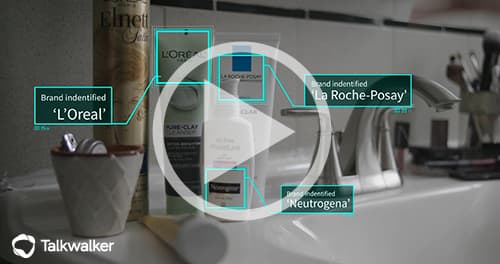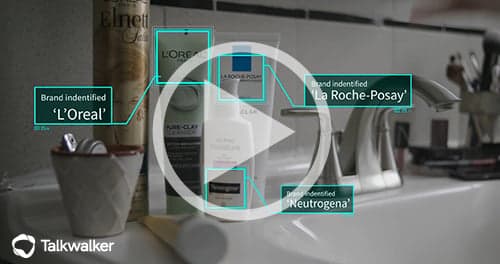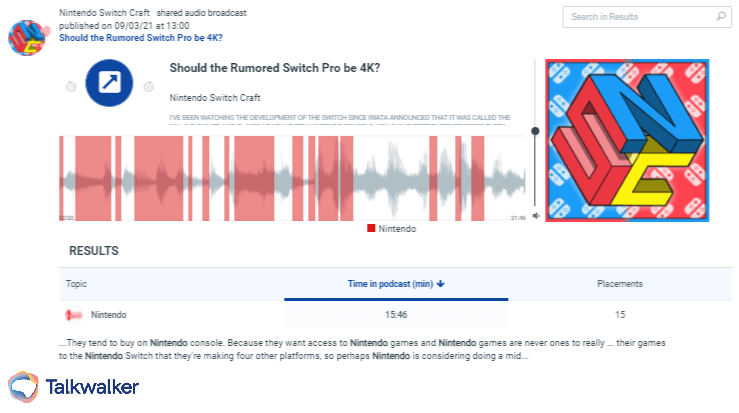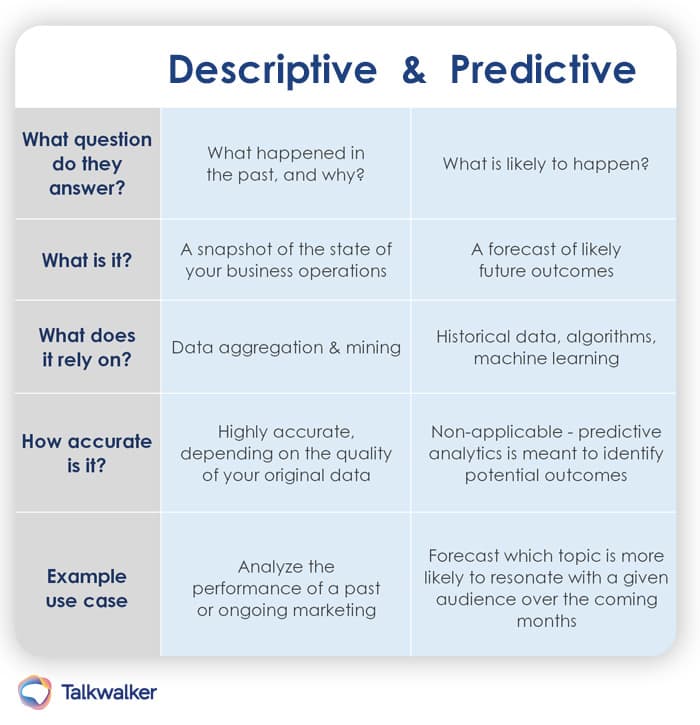Is predictive analytics the next social listening? Talkwalker
There have been more than a few major changes in social listening over the last few years: new social networks disrupting the Big Four...
August 5, 2022

See predictive analytics in action
I remember the first time I saw image recognition in action on a social listening platform (full disclosure - yes, it was Talkwalker, at the very beginning of my tenure with the company). It was 2015, and the technology was initially being used to detect brand logos in social media images, as the next step in brand monitoring.
At the time, traditional social media listening was limited to text analytics, and the addition of image recognition allowed brands to identify hidden brand mentions, just based on the inclusion of their logos in a public image.
This was a game changer - though at first it could be fooled by similar patterns. I remember an occurrence when the green logo of a Turkish football team had been mistakenly recognized as the one for a popular coffee brand. Good thing the algorithm learned quickly!
And it wasn’t just a gimmick. Less than two years later, image recognition was a requirement in all enterprise social listening tools’ RFPs - and is no longer limited to logos, but detects scenes, objects, and even writing within a set image.

Visual analytics let you analyze the content of public videos or images - identifying different elements such as logos, objects and scenes.
This was just one of the many examples I’ve seen of AI technologies being used in social listening to clean and make sense of massive amounts of data, and turn them into richer insights, such as those hidden visual brand mentions in social media images.
It later showed through sentiment analysis that went beyond mere keyword analysis, the introduction of video and speech recognition to unlock insights from videos and podcasts, the ability to cluster conversations about a specific topic without the help of an in-house data scientist… On top of custom data cleaning models such as spam, bot, fake news, and NSFW (not suitable for work) detection to only surface relevant consumer conversations.

With podcast monitoring, you’ll be able to automatically detect when your brand or products are mentioned within a huge set of podcasts.
Now, what’s the next frontier for social listening, and in a broader sense, consumer intelligence? The next must-have requirement in your company’s RFP? According to independent research, it may well be predictive analytics: as outlined in The Forrester New Wave™: AI-Enabled Consumer Intelligence Platforms, Q3 2021, consumer intelligence needs to venture beyond descriptive and diagnostic analytics (what happened in the past and why?) to add a new dimension of insights with predictive, and ultimately prescriptive analytics.

What is the difference between descriptive and predictive analytics?
First, what do we mean when we speak of predictive analytics? Essentially, it is the combination of advanced data science techniques and artificial intelligence applied to historical and real-time data points to forecast future outcomes.
It’s actually not that new a concept outside of social listening. Predictive analytics is already used to guide decision-making in many sectors - for example, some operations teams rely on this intelligence to manage their inventory around a given product launch, so that they have enough supply in the right places to answer the projected demand. It is also the technology behind day-to-day concepts such as credit scores, which predict the credit trustworthiness of an individual.
So, what do predictive analytics look like in the world of social listening? We are still in the early stages of this technology, yet some platforms have started developing use cases where AI can help you predict what is likely to happen next for your brand, product or topic of interest.
You could for example look at discussions linked to a topic of interest, whether it’s the theme of your next content campaign, or the focus of your next South by Southwest (SXSW) speech proposal, to see if it is likely to still be trending by the time the campaign is launched, or you’re ready to go up on the stage of your future event.

Using Talkwalker’s Forecasting to predict the evolution of consumer conversations about the metaverse over the next three months
What comes next in social listening could be the ability to use the data collected to measure and predict the impact of specific actions on a company’s reputation, or to understand how well new products or services match the future needs of specific audiences. Which seems more relevant than ever for big brands, who are hiring more and more Heads and Directors of Foresight to help guide their long-term strategy.
Imagine what you could do if you already knew what is likely to be trending next month. You could develop more engaging content, more popular products, and hopefully deliver more customized experiences for your consumers.
Yes, predictive analytics may very well be the next frontier for your social listening strategy, and consumer intelligence as a whole.

